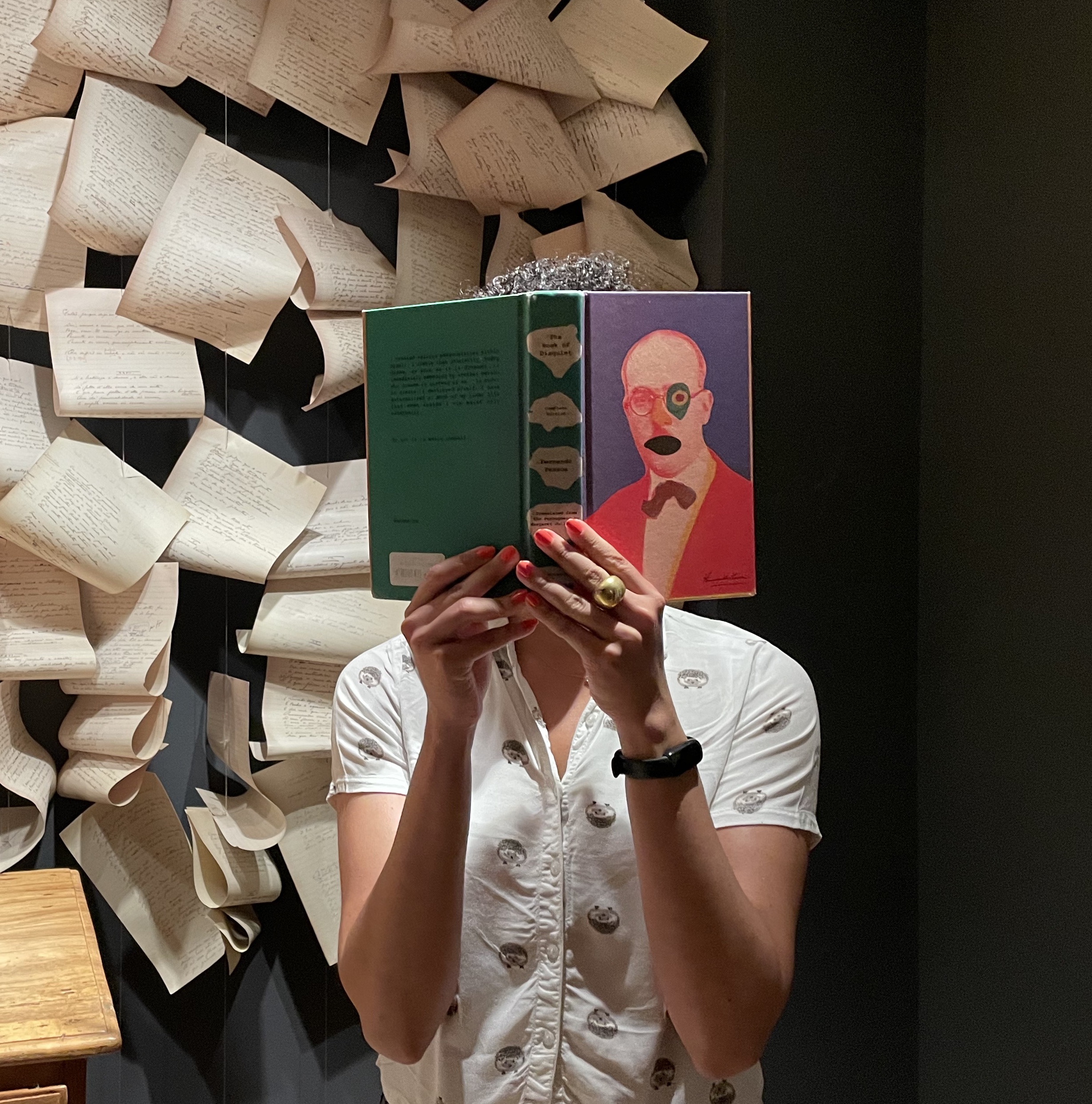New poems by LOREN GOODMAN
Please welcome back long-time TC contributor Loren Goodman.
Table of Contents:
—G-d in a Cup
—Dear Jeremy
—Due to the Light
—Dolphin Facts
Loren Goodman was born in Kansas and studied in New York, Tucson, Buffalo and Kobe. He is the author of Famous Americans, selected by W.S. Merwin for the 2002 Yale Series of Younger Poets, and Non-Existent Facts (otata’s bookshelf, 2018), as well as the chapbooks Suppository Writing (The Chuckwagon, 2008), New Products (Proper Tales Press, 2010) and, with Pirooz Kalayeh, Shitting on Elves & Other Poems (New Michigan Press, 2020). A Professor of Creative Writing and English Literature at Yonsei University/Underwood International College in Seoul, Korea, he serves as the Chair of Comparative Literature and Culture and Creative Writing Director.
G-D IN A CUP
The “o” in G-d
In “G-d in a Cup”
Is like the mouth
Of the universe
Into which G-d
Has from this world
Disappeared. This
Absence of the “o”
Is also like the coffee
That has been from
The cup faithfully sipped
The “u” in “cup” is like
The cup that holds the
Coffee while the “c”
Before the “u” is like
The handle you hold
Me with. The “p” at
The end is like the
Cup tipped to pour
Into you me. I went
Inside G-d in a Cup
Only once. It was
Empty and dark; the
Owner was as
Quiet and mysterious
As G-d and like the
Son of G-d, had long
Hair. Like G-d these
Days, he also looked
Sad. I didn’t go there
To drink coffee—
Just to cheer him up
DEAR JEREMY
In these last hours
Of the Passover Seder
It is said by the higher
Chasidic Scholars that time
Loses its essence and that
We are at least once, with
The help of memory (at this
Time “even the future can be
Remembered”) able to defeat
It. Could be something to do
With the wine. In any case,
According to the internet the
Air in Seoul today is not so bad
So enjoy your mountain climb
I’ll look forward to dancing
With the stars
DUE TO THE LIGHT
Everyone here in Stuttgart
Is wearing blue yarmulkes
DOLPHIN FACTS
Dolphins are one of the most intelligent sea creatures.
Dolphins are not just blue, but black, white, grey and shades of green.
There are 32 species of marine dolphins with six types of purposes. From human perspectives, the purposes of dolphins are often blurred, but from the dolphins’ points of view, such purposes are as sharp as shark’s teeth.
The term “dolphin” is from the Greek delphis, meaning “womb,” perhaps because dolphins resemble dolls with fins.
Called “re-entrants,” dolphins once lived on land and looked and behaved something like bald accountants. Some dolphins still have hair on their heads, and the Amazon River dolphin has hair in its mouth. Dolphins also have middle finger bones in their flippers, a forearm, wrists, and—deep inside their bodies—a few baby back ribs.
Kissing a dolphin in ancient Greece was considered miraculous, the opposite of death. The Greeks called them hieros kysthys “kissable fish,” and the sun god, Apollo, assumed the form of a dolphin when he founded his oracle at Delphi on a mountain of kisses.
In Rome, dolphins were thought to carry souls to the “Islands of the Blest,” and images of dolphins have been found in the afterlife.
Famous dolphins such as Pliny, Herodotus, Aelian, and Aristotle comment on the compassion, friendly, and mortal nature of the dolphin.
Images of dolphins have been found carved far within the desert city of Michael Jordan.
While the brains of most mammals have a relatively smooth surface, the brains of humans are extremely convoluted. The dolphin brain is even more “folded” than humans and was this way millions of years before the first appearance of humans. Scientists often measure intelligence—both their own and those of their owners—by the amount of time it takes them to unfold a brain.
Some scientists can understand as many as 60 words, which can make up 2000 sentences. They also show signs of self-awareness.
A baby dolphin must learn to hold its peace.
A female dolphin will assist in the birth of another’s baby dolphin, and if it is a difficult birth, the “midwife” might help pull out the baby. Other dolphins, including bulls, will collect medical fees.
The eyes of a dolphin produce “dolphin tears,” a slippery secretion which protects the eye against foreigners, crocodiles and infection, and reduces friction between the individual and society. Married dolphins see quite well both at home and in the workplace.
A dolphin can produce whistles for communication and clicks for sonar at the same time, which would be like a catcher flashing two different signals, with two different pitchers, holding two different balls.
Unlike most wild animals, dolphins spend a lot of time enjoying sex and foreplay that is not determined by being “in season” or the urge to procreate. Some Sex Historians have theorized that in fact our human ancestors learned foreplay from watching dolphins some time in the late 19th century.
No one knows exactly why dolphins bench themselves. But because dolphins have a strong internal sense of self-evaluative game play, they do not require coaches to do so.
Dolphins typically do not live alone, but rather in schools. They have a complex social structure and seem to have a wide range of emotions, including humor. Several of the most important comedians of our times grew up attending Dolphin schools.
Some scientists think that dolphins, like opera singers, can use their high-pitched sounds to shatter glass.
While most scientists avoid contact with humans, some are known to play and associate with humans, especially children.
Dolphins play around boats, surfing the bow waves and even helping fisherman by signaling when it’s the best time to cast their nets… and then herding the fish into them, all for only 10% of the net profits.
In a fight between a healthy shark and a healthy dolphin, it’s a 50-50 chance of winning. If the dolphin is unhealthy, it has a 100% chance of winning.
Dolphins are much happier and much more intelligent than humans. They do not murder each other or destroy their environment.
Dolphins can recognize themselves in the mirror. They are also able to turn the mirror inwards, and recognize themselves in other dolphins.
Dolphins like having fun with us. They frequently play with humans they encounter in their environment and have even been seen to use them as tools.
Dolphins don’t have a sense of smell, but they do have good taste.




